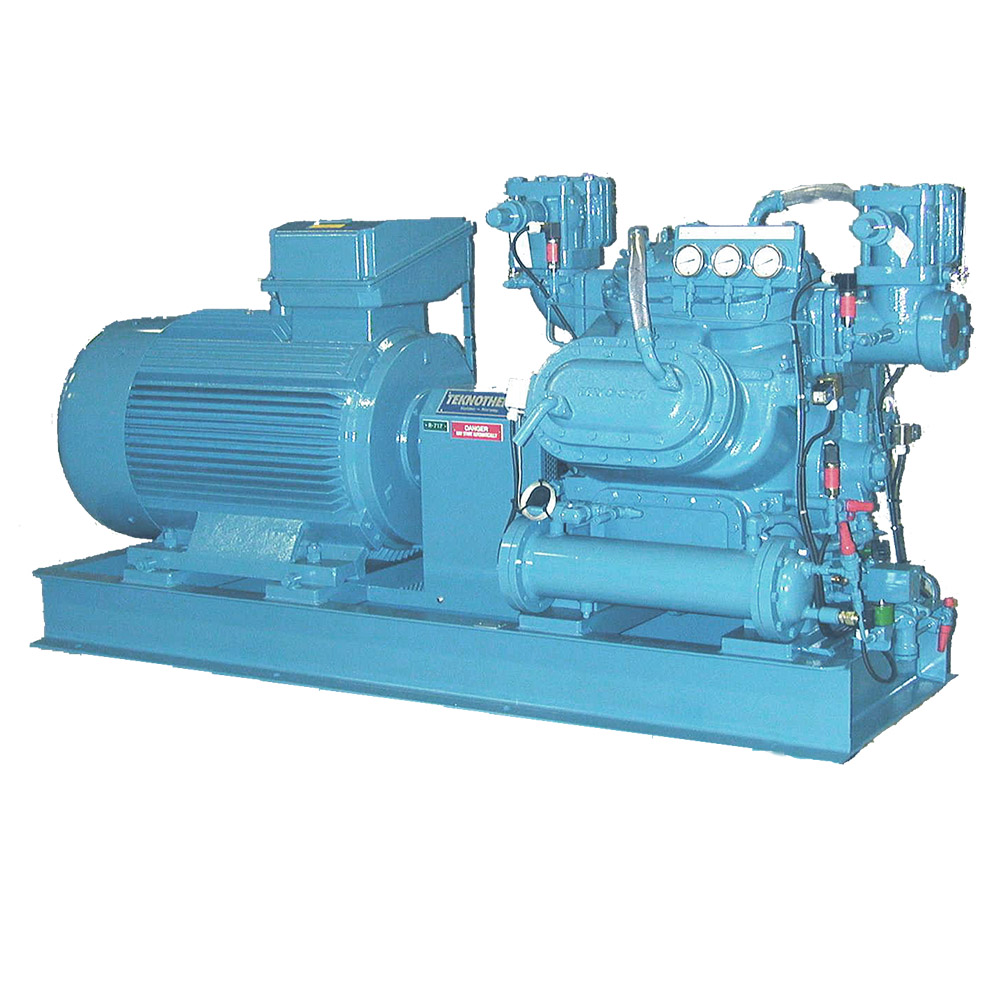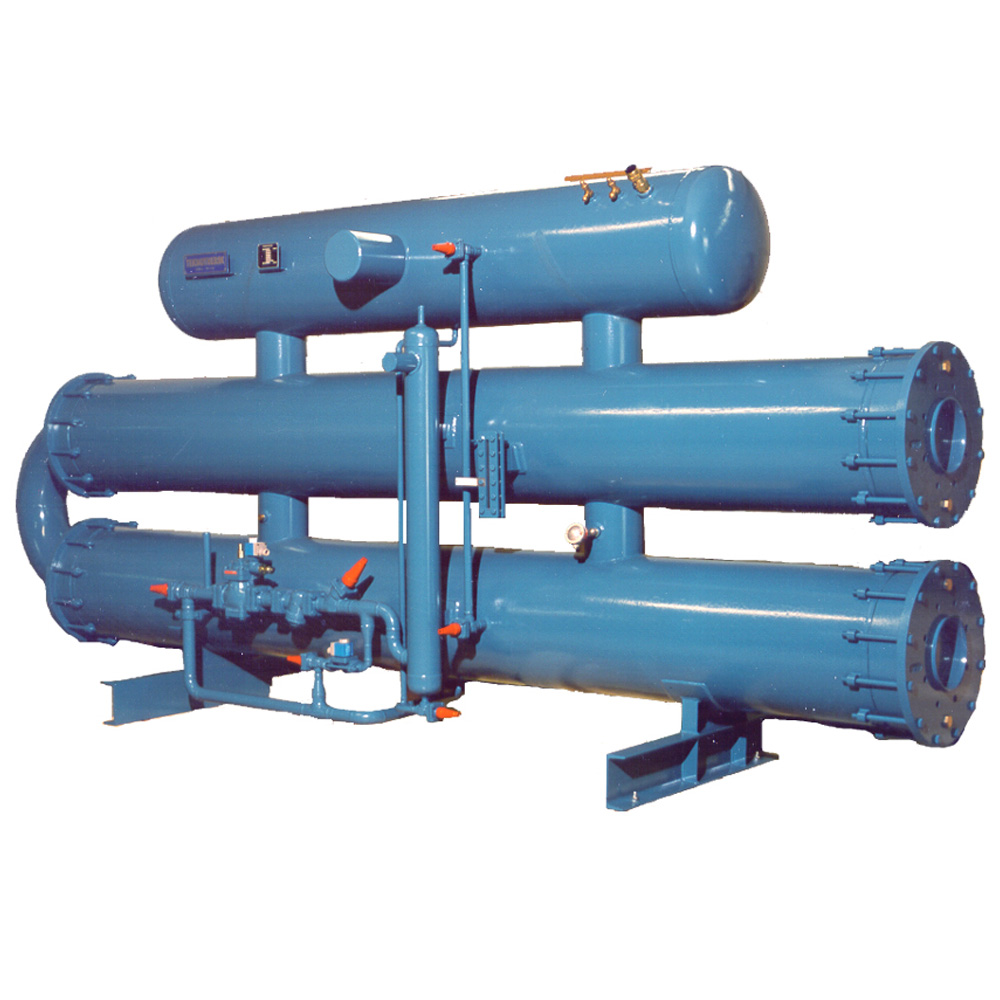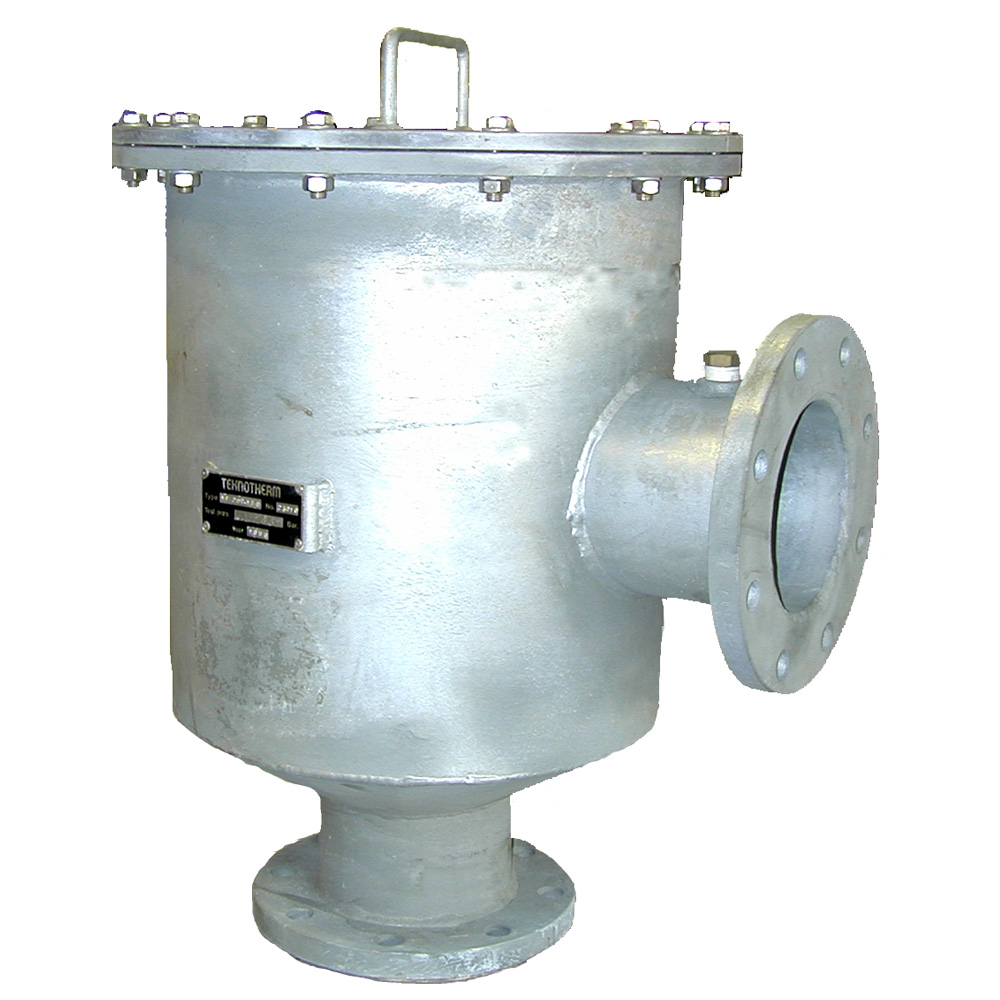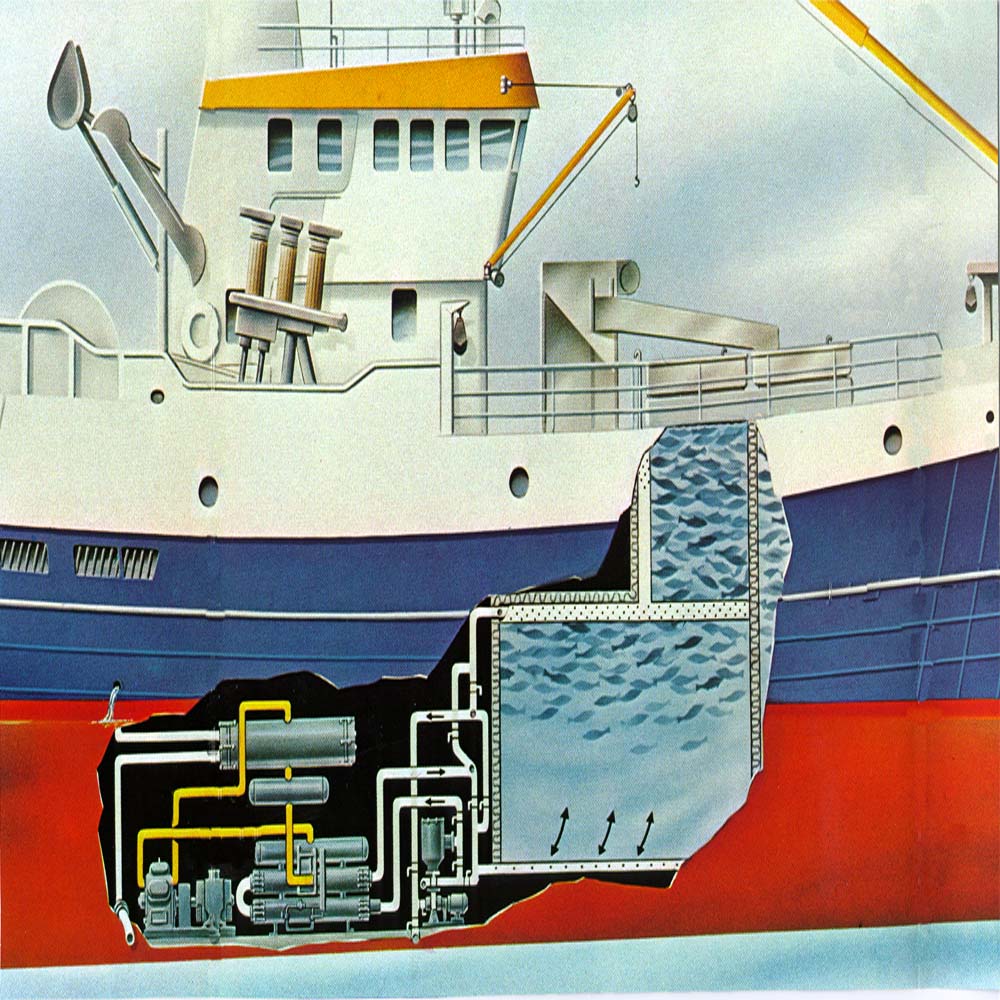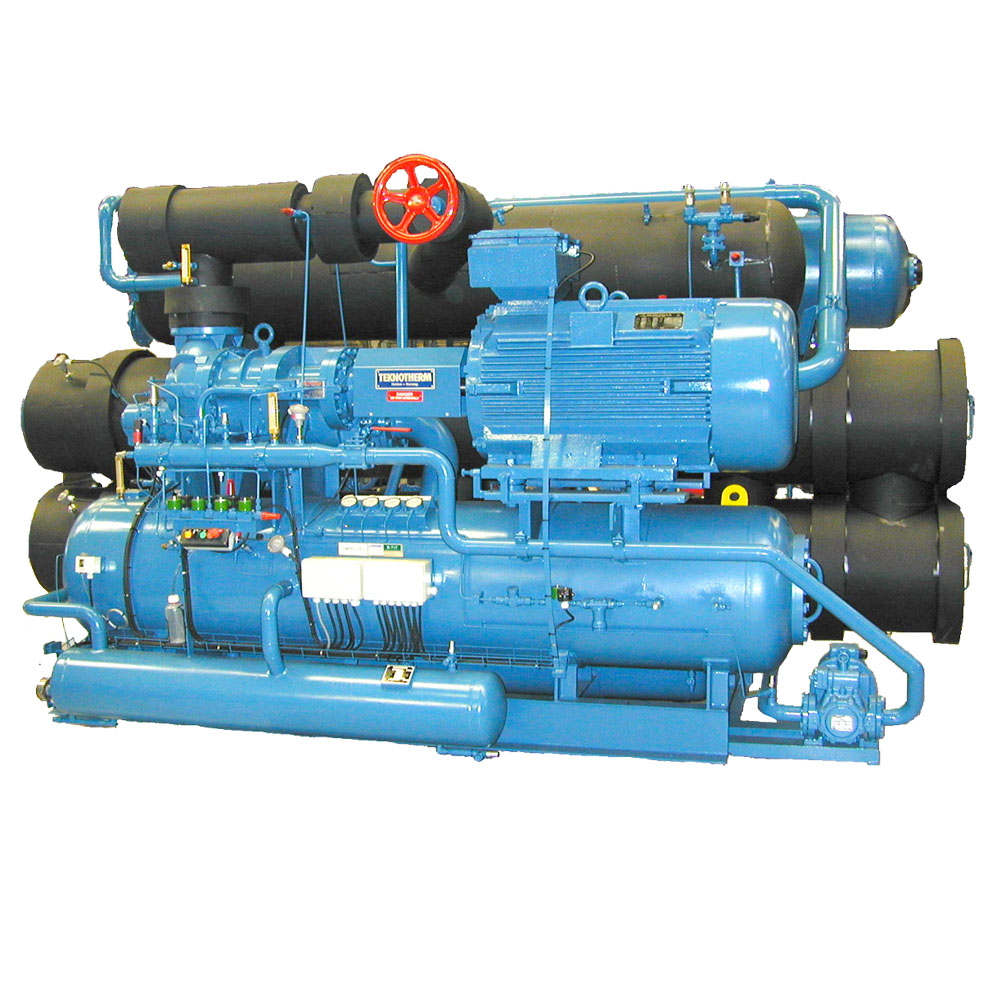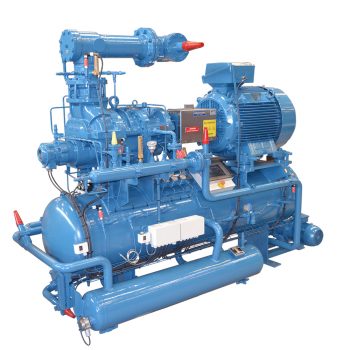Teknotherm’s RSW System:
- Is ideal for pelagic (purse seining and mid-water trawling)
- Enables preservation of large catches by cooling the catch rapidly to a temperature that allows for storage on board over time, without significant reduction in quality
- Has enabled large qualities of mackerel, horse mackerel and herring to be used for humSan consumption
- Improves the quality of fishmeal through better raw materials
- Reduced quotas set higher standards – better product means better prices
Teknotherm RSW units provide rapid chill-down and storage of the catch in refrigerated sea water. Storing the catch in RSW is an effective and cost-saving method of preservion until landing ashore or further on board processing. The catch is cooled to close to the freezing point of seawater within a minimum time through Teknotherm’s highly efficient RSW-chillers of both flooded shell and tube type.

The RSW-Principle
In simple terms, a RSW-system functions as follows:
Seawater is recirculated by pumps through the tanks (and thus the product) and the chilling system. The seawater is chilled by the refrigeration machinery before it enters through the bottom of the tanks and is distributed evenly over the entire bottom cross-section of the tanks through a set of perforated plates or similar distribution devices. The chilled seawater passes upwards through the tank and layers of fish, thus keeping the fish in a semi-floating suspension while at the same time cooling them. The water then passes through suction screens in the top of the tanks, returns to the chilling unit of the system, passes through the unit and repeats the circulation process. In order to keep the circulating water in good condition, a limited amount of feedwater may be added, and “dirty” water bled off.
The water circulating system is arranged so that the flow can be reversed by operating certain valves in the main water distribution manifold.
The storage tanks
RSW tanks are normally constructed adjacent to one another spanning the width (beam) of the vessel. There are usually 3, 6, 9 etc. storage tanks on board a single vessel. The storage tanks are normally loaded to a capacity of approximately 80% fish and 20% water, depending on the type of fish. The tanks must be properly insulated from the hull, deckheads, machinery- and accommodation spaces to limit the possibility of heat ingress as much as possible. Furthermore the tanks must be equipped with over-flow and equalizing pipes. It is essential that the interior surfaces of the tanks have a smooth finish, with no obstructions or sharp edges.
Flexible refrigeration installations
The necessary machinery, including chillers, compressors, receivers, condensers and pumps, can either be installed as a single or several self-contained units, or as individual and separate components.
The machinery can be placed according to individual needs; in the engine room, a dedicated refrigeration compartment, under the shelter deck, in the bow of the vessel, or anywhere else where practical on board.
The pumps however, should be situated as low as possible.


